The Rise of Nationalism in Europe Class 10 Important Questions and Answers PDF download

IMPORTANT TERMS RELATED TO HISTORY CHAPTER 1
1. Republic: It’s a state where the supreme power is held by the people and their elected representatives. The president is either appointed through elections or nomination.
2. Democratic republic: It is a country that is both public and a democratic. It is the one where ultimate authority and power is derived from the citizens.
3. Socialism: It is an economic theory, system or movement, where the production and distribution of goods is done, owned and shared by the citizens of a society.
4. Socialist Republic: This refers to any state that is constitutionally dedicated to the establishment of socialism.
5. Absolute monarchy: It is a type of a governmental form of monarchy in which all governmental power and responsibilities arise from a monarch. Louis XIV of France is the most famous example of absolute monarchy.
6. Utopia: An imagined place or state of things in which everything is perfect
7. Nation-state: A sovereign state, resided by comparatively homogeneous grow people who share a feeling of common nationality.
8. Nationalism: Loyalty and devotion towards a nation.
9. Aristocracy: A class or group of people believed to be superior (as in rank, wealth, or intellect).
10. Serf: a person in the past who belonged to a low social class and who lived and worked on a land owned by another person.
11. Universal Suffrage: The right of all adult citizens to vote in an election.
12. Conservatism: Commitment to traditional values and ideas with opposition to chainnovation.
13. Habsburg Empire: The Empire that ruled Austria, Hungary, including the Alpine region of Tyrol, Sudetenland, and Bohemia.
14. Ottoman Empire: Turkish empire ruled by the Caliph – the spiritual and temporal help of the Muslims
15. Ideology: System of ideas reflecting a particular social and political vision.
16. Plebiscite: A direct vote by which all the people of a region are asked to accept or reject a proposal.
17. Ethnic: It relates to a common racial, tribal or cultural origin or background that a community identifies with or claims.
18. Allegory: when an abstract idea is expressed through a person or a thing. An allegorical story has two meanings, one literal and one symbolic.
19. Romanticism: A cultural movement, which aimed at developing a particular form of national sentiment and promote a feeling of collective heritage as the basis of a nation.and the English language over Ireland forcibly
NCERT Solutions for Class 10 Social Science History Chapter 1 The Rise of Nationalism in Europe
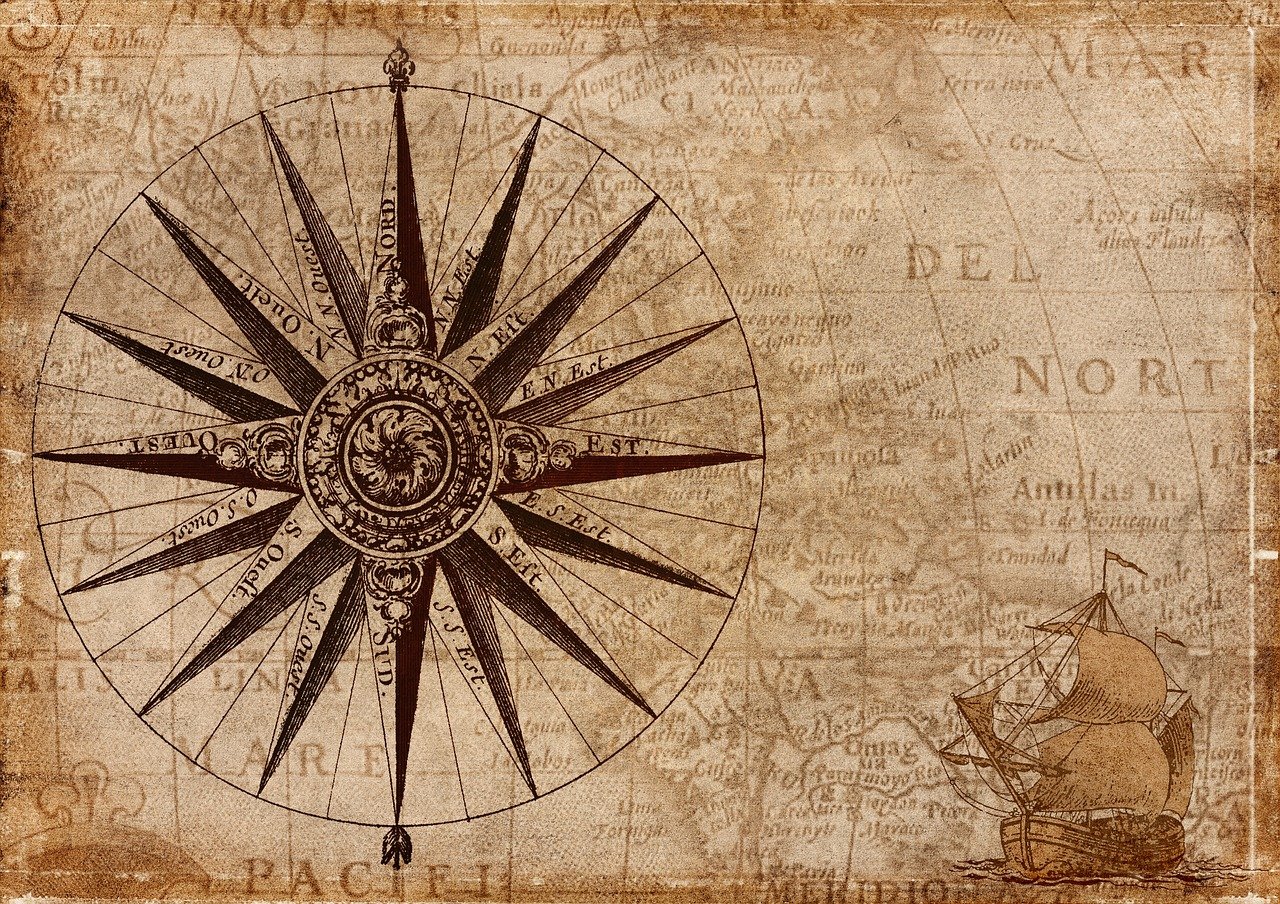
Ques 1. Name the Treaty of 1832 that recognised Greece as an independent nation.
Ans:The Treaty of Constantinople (1832) recognised Greece as an independent nation.
Ques 2. Name the event that mobilised nationalist feelings among the educated elite across Europe in 1830-1848?
Ans: The event that mobilised nationalist feelings among the educated elite across Europe in 1830-1848 was the Greek War of Independence.
Ques 3. What was the main aim of the revolutionaries of Europe during the years following 1815?
Ans: The main aim of the revolutionaries of Europe during the years following 1815 was to oppose monarchical forms of government, that had been established after the Congress of Vienna and to fight for liberty and freedom.
Ques 4. Who remarked, “When France sneezes, the rest of Europe catches a cold”?
Ans: Duke Metternich, the Austrian Chancellor, remarked “When France sneezes, the rest of Europe catches cold”.
Ques 5. Who was proclaimed the German Emperor in a ceremony held at Versailles in January 1871?
Ans: Kaiser William I of Prussia was proclaimed the German Emperor in a ceremony held at Versailles in January 1871.
Ques 6. What was the meaning of liberalism in early 19th century in Europe?
Ans: For the new middle classes, liberalism stood for freedom for the individual and equality of all before the law. Politically, it emphasised the concept of government by consent. Economically, liberalism stood for the freedom of markets and the abolition of state-imposed restrictions on the movement of goods and capital.
Ques 7. What was the main aim of the treaty of Vienna of 1815?
Ans: The Treaty of Vienna of 1815 was signed with the main aim of undoing most of the changes that had come about in Europe during the Napoleonic wars. It was signed to re-establish conservative regions in Europe.
Ques 8. What was the strong demand of the emerging middle classes in Europe during the 19th century?
Ans: Men and women of liberal middle classes combined their demands for constitutionalism with national unification.
Class 10 history chapter 1 important questions with answers
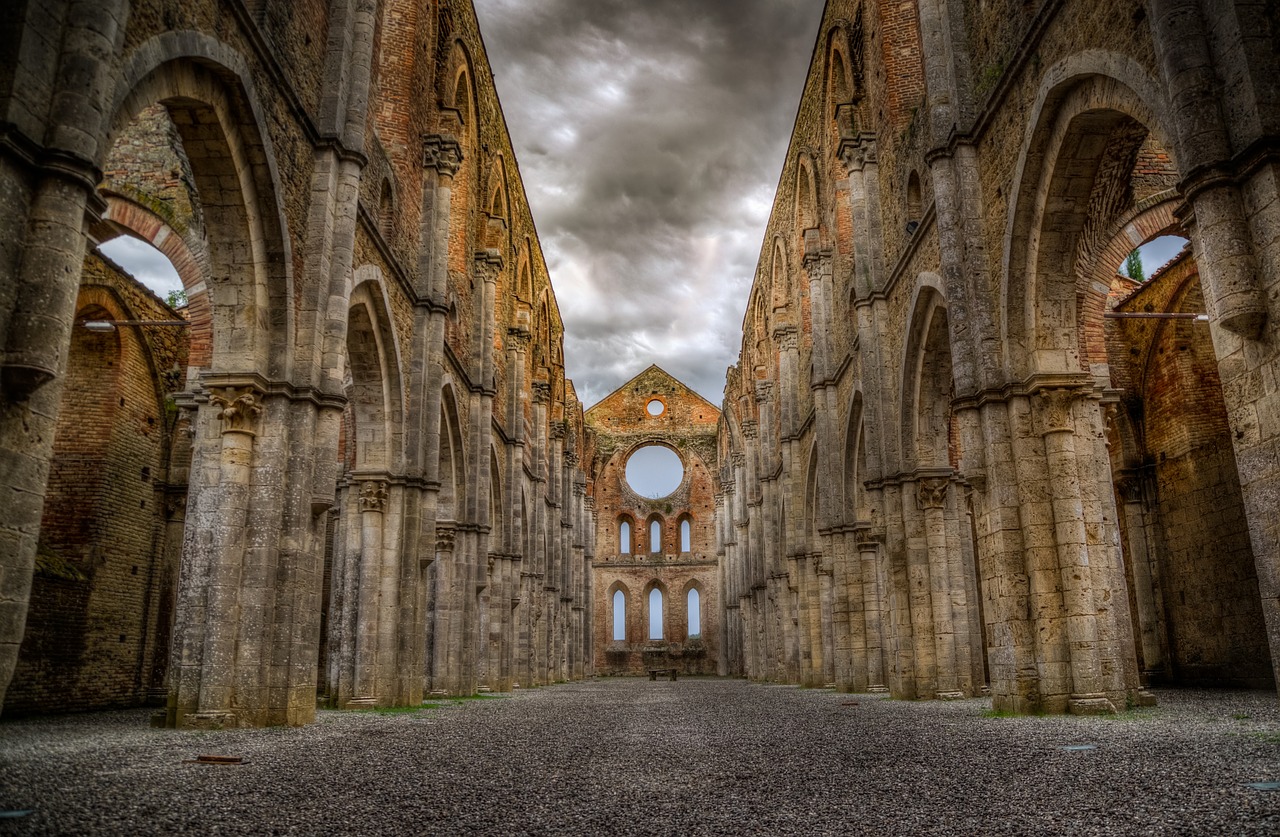
Ques 9. How had the female figures become an allegory of the nation during the 19th century in Europe ? Analise
Ans: In the 19th century in Europe, the female figures became an allegory of the nation in thefollowing ways.
- The artists, in the 18th and 19th centuries in Europe, wanted to represent a country, as if it was a person. In other words, they wanted to personify the nation. Nations were represented as female figures. The female form did not belong to any particular woman in real life. It was an abstract idea, which gave the nation a concrete form. The female figure became an allegory of a nation.
- In France, the female form was given the name of Marianne, which represented the nation. Her characteristics were red cap, the tricolour and the cockade, drawn from those of Liberty and the Republic.
- Similarly, Germania became the allegory of the German nation. Germania wears a crown of oak leaves because oak stands for heroism.
Ques 10. ‘The decade of 1830 had brought great economic hardships in Europe’. Support the statement with arguments.
Ans: The 1830s were years of great economic hardship in Europe because:
- The first half of the nineteenth century saw an increase in population, all over Europe.There was scarcity of jobs and few employment opportunities.
- Population from rural areas migrated to the cities in search of jobs. They lived in overcrowded slums.
- Small producers in towns faced stiff competition from imports of cheap machine goods from England.In those parts of Europe where aristocracy was strong and enjoyed enormous powers, the peasants groaned under the burden of feudal dues and taxation.
- The rise of food prices or a year of bad harvest, added to the miseries of the common man.
Ques 11. Culture had played an important role in the development of nationalism in Europe during the 18th and 19th centuries. Support the statement with examples.
Ans: Culture played an important role in creating the idea of a nation in Europe in the following ways.
- Art, music, literature and drama helped to express, shape and strengthen nationalist sentiments.
- Romantics like the German philosopher Johann Gottfried Herder held the view that true German culture could be discovered only among the common people, the das volk.
- Glorification of reason and science was criticised by the romantic artists, rather they favoured emotions, intuitions and mystical feelings.
- Language too boosted nationalism. The Polish people opposed the Russian occupation and the ban on Polish language, by using it in the Church gathering for all religious ceremonies and for religious instruction. The Polish language became a weapon of the nationalists.
- Two Germans, Grimm Brothers, used stories and folktales written in German to promotethe german spirit against the domination of the french.
- Operas and music, like that of Karol Kurpinski, kept alive the national spirit.
- Folk dances like the polonaise and mazurki became national symbols.
Long Answer Type Questions The rise of nationalism in Europe class 10 [5 Marks]
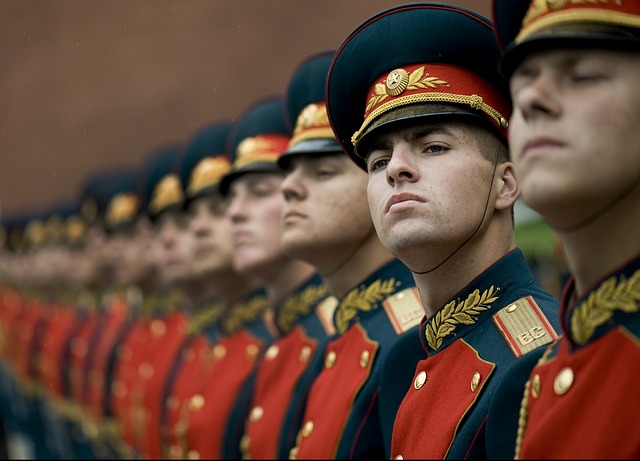
Ques 12. Analyse the measures and practices introduced by the French revolutionaries to create a sense of collective identity amongst the French people.
Ans: The measures and practices introduced by the French revolutionaries to create a sense of collective identity among the French people were as follows.
- The idea of la patrie (the fatherland) and le citoyen (the citizen) emphasised the idea of united people enjoying equal rights under a constitution.
- A new French flag, the tricolour, was chosen to replace the former royal standard.
- The Estates General was elected by the active citizens and renamed the National Assembly.
- New hymns were composed, oaths taken and martyrs commemorated in the name of
- nation.
- Regional dialects were discouraged and French, as it was spoken and written in Paris,
- became the common language of the nation.
- A centralised administrative system was put in practice and it formulated uniform laws for all citizens within its territory.
- Internal customs duties and dues were abolished and a uniform system of weights and
- measures was adopted.
Ques 13. Napoleon had destroyed democracy in France, but in the administrative field he had incorporated revolutionary principles in order to make the whole system more rational and efficient. Analyse the statement with arguments.
Ans: Napoleon declared himself the emperor of France and destroyed democracy. In the administrative field, he incorporated revolutionary principles, which were as follows.
- The Civil Code of 1804, also known as Napoleonic Code, abolished all the privileges
- based on birth, established equality before the law and gave the right to property.
- The code which was introduced in the regions under French control, like Italy, Germany, Switzerland, simplified administrative divisions, abolished the feudal system and freed peasants from serfdom and manorial dues,
- In towns guild restrictions came to an end.
- Uniform weights and measures were adopted. A common national currency helped in the movement of goods and capital from one region to another.
- Transport and communication systems were improved.
Ques 14. ‘Nationalism no longer retained its idealistic liberal democratic sentiments by the last quarter of the 19th century in Europe’. Analyse the statement with examples. (The Rise of Nationalism in Europe)
Ans: Towards the end of the 19th century, nationalism became a narrow belief with inadequate ends
- This period saw nationalist groups becoming increasingly prejudiced of each other and ready to wage a war at the slightest of the pretext.
- Nationalism was now identified with increasing one’s sphere of influence, by establishing control over more territories. Balkan states became jealous of each other and entered into a conflict to establish more control and power in the region at the cost of others.
- The chief European authorities saw this as an opportunity and manipulated the nationalist desires of the subject peoples.
- European powers were keen on countering the hold of other powers over the Balkans. They did nothing serious to solve the Balkan issue rather watched the situation to turn fruitful for them.The most severe tensions emerge after 1871, leading to a series of wars and ultimately led to the First World War in 1914.
Very Short Answer Type Question [1 Mark]
Ques 15. What was the major change that occurred in the political and constitutional scenario due to French Revolution in Europe?
Ans: Major political and constitutional change that occurred after the French Revolution of 1789 was the end of the rule of absolute monarch and transfer of sovereignty from the monarchy to a body of French citizens.
Ques 16. What was the main aim of the French revolutionaries?
Ans: The main aim of the French Revolutionaries was to transfer sovereignty from the monarchy to a body of French citizens and to create a sense of collective identity amongst the French people.
Ques 17. What was the major issue taken up by the liberal nationalists?
Ans: The major issue taken up by the liberal nationalists was the freedom of press.
Short Answer Type Question [3 Marks]
Ques 18. How did nationalism develop through culture in Europe? Explain.
Ans: Refer to Ans 11
Ques 19. How did a wave of economic nationalism strengthen the wider nationalist sentiments growing in Europe? Explain.
Ans: wave of economic nationalism strengthened wider nationalist sentiments growing in Europe with:
- (a) the demands of new commercial classes for a unified economic province for unconstrained transfer of commodities, people and funds.
- (b) the formation of the zollverein in 1834.
- (c) the elimination of tariff barriers by the union.
- (d) the reduction in the number of currencies from over thirty to two.
- (e) the formation of a network of railways that further helped mobility and connected economic
Ques 20. Describe the events of French Revolution which had influenced the people belonging to other parts of Europe.
Ans: Events of French Revolution that influenced the people of other parts of Europe were as follows.
- (a) When the news of the French Revolution reached different cities of Europe, students and other members of educated middle classes began to set up Jacobin clubs which influenced the French army.
- (b) The French armies began to carry the idea of nationalism abroad.
- (c) The Napoleonic Code, introduced in 1804, abolishing privileges and upholding equality and other reforms, exported these new ideas to the European regions under French Control
Long Answer Type Questions [5 Marks]
Ques 21. Describe the process of unification of Germany.
Ans: The Process of unification of Germany:
- By 1848, the popular effort of political associations failed in installing a constitutional monarchy in Germany.
- The Failure of Frankfurt Parliament made it clear that German unification had to come through the combined effort of monarchy and army supported by large landowners.
- From 1848, Prussia took on the leadership of the movement of national unification.
- In this process Otto von Bismarck, the Chief Minister of Prussia, proved to be the main architect.
- Bismarck reached his goal with the help of Prussian army and the bureaucracy. He fought three wars in seven years with Austria, Denmark and France which ended in Prussian victory and completed the process of German unification.
Ques 22. “Nationalism spreads when people begin to believe that they are all part of the same nation.” Support the statement.
Ans: The term nationalism refers to the feeling of oneness based on common heritage and common identity and a sense of belonging to one’s nation.
- The spirit of nationalism can spread and develop only when people discover some bond or unity that binds them together.
- The sense of collective belonging develops through the experience of united struggles.
- There are a variety of cultural process through which nationalism captures people’s imagination.
- History and fiction, folklore and songs, popular prints and symbols, all play a role in the spread of nationalism.
- Any image or symbol that is identified as nation is also recognised as a bond and help inthe spread of nationlism
23. Describe the process of unification of Italy.
ans. During the middle of the 19th century, italy was divided into seven states of which only sardina Piedmont was ruled by Italiyan princely house
- Mazzini a great revolutionary leader of Italy, inspired the youth with the ideas of establishing a single unified Italy. He set up secret societies like Young Italy in Marseilles and Young Europe in Berne with like-minded young men from Poland, France, Italy and German states.
- Mazzini prepared the ground for Cavour to complete the process of unification.
- After a series of failures of Mazzini, King Victor Emmanuel II took to unifying Italy
- through wars.
- Cavour, the Chief Minister, through his tactful diplomatic alliance with France, defeated Austrian forces in 1859.
- Under the leadership of Giuseppe Garibaldi, armed volunteers marched into South Italy in 1860 along with the Kingdom of two Sicilies and won the support of local peasants and drove the Spanish away, thus unifying Italy in 1861. Victor Emmanuel II was made the King of united Italy.
Ques 24. Describe the process of unification of Britain.
Ans: In Britain the formation of a nation-state was not the result of a sudden upheaval, revolution or national struggle but of a long drawn out parliamentary process. England had people of many ethnic groups such as English, Welsh, Scot and Irish with their own cultural and political traditions. The English nation steadily grew in importance, wealth and power and extended her influence over other nations of the island.The British Parliament, which had seized power from the monarchy in 1688, was the instrument through which a nation-state, with England at the centre, came to be forged.The Act of Union of 1707 between England and Scotland resulted in the formation of United Kingdom of Great Britain. Ireland, after a prolonged conflict between Irish Catholics and British Protestants, was forcibly incorporated into the United Kingdom in 1801. The symbols of the new Britain—the British flag (Union Jack), the national anthem and the English language—were actively promoted.
Ques 25. Describe any five steps taken by the French Revolutionaries to create a sense of collective identity among the French people.
Ans: Refer to Ans 12
Ques 26. “The idealistic liberal-democratic sentiment of nationalism in the first half of the nineteenth century became a narrow creed with limited ends.” Examine the statement.
Ans: Refer to Ans 14
The Rise of Nationalism in Europe MCQs Class 10 History Chapter 1
Short Answers Type Questions [3 Marks]
Ques 27. How did the local people in the areas conquered by Napoleon react to French rule?Explain.
Ans:
- The reactions of the local populations to French rule were mixed. Although the economic reforms introduced by Napoleon were welcomed by businessmen and small producers of
- Initially the French armies were welcomed in Holland, Switzerland and in cities like Brussels, as messenger of liberty, but they soon realised that administrative reforms did not go hand in hand with political freedom.
- The people reacted against increased taxation and censorship.
- Local people had to serve in the French army to conquer other parts of Europe, these all seemed to outweigh the advantages of administrative changes.
Ques 28. Explain the conditions that were viewed as obstacles to the economic exchange and growth by the new commercial classes during the 19th century in Europe.
Ans: The conditions that were viewed as obstacles to the economic exchange and growth by the new commercial classes during the 19th century in Europe were:
- There were many states imposed restrictions on the movement of goods, capital and people.
- Each confideration had its own system of weights and measures that involved time-
- consuming calculations.
- Because of countless principalities, there were many check posts where custom duties were paid by the merchants. It resulted in price rise and delay in supply.
Ques 29. What were Jacobin Clubs? How did their activities and campaigns help to spread the idea of nationalism abroad? Explain.
Ans: Jacobin clubs were the political clubs that were set up by educated middle class in all over Europe to replace autocratic regimes in Europe with democratic governments. They were inspired by the events in France.
- The activities and campaigns of these clubs paved the way for the French armies which moved into Holland, Belgium and Switzerland and much of Italy in 1790.
- With the outbreak of revolutionary wars, the French armies carried the ideas of nationalism in foreign countries.
Long Answer Type Questions (5 Marks)
Ques 30. Explain any five social and administrative reforms introduced by Napoleon in the regions under his control.
Ans: Refer to Ans 13
Ques 31. How had revolutionaries spread their ideas in many European states after 1815. Explain with examples.
Ans:
- After the Congress of Vienna in 1815 when conservative regimes were restored to power,many liberal minded people went underground because of the fear of repression. Secret societies sprang up in European states to train the revolutionaries and spread their ideas.
- Many revolutionaries opposed monarchial rule and fought for liberty and freedom of their. One such revolutionary was Giuseppe Mazzini, an Italian patriot, was sent to exile in 1831 for attempting a revolution in Liguria. He became the member of a secret society carbonari.
- He founded two underground socities, first Young Italy in Marseilles and the other Young Europe in Berne. The society had members from Poland, France, Italy, Germany, etc. The members believed in the formation of nation states and they were liberal minded people.
- Following the example of Italy, secret societies were set up in Germany, France Switzerland, Poland. Mazzini’s vision of democratic republics frightened the conservatives.
Ques 32. “Culture played an important role in creating the idea of the nation in Europe.”Support the statement with examples.
Ans: Refer to Ans 11
The Rise of Nationalism in Europe Class 10 History Chapter 1
Short Answers Type Questions [3 Marks]
Ques 33. Explain the process of unification of Italy.
Ans: Refer to Ans 23
Ques 34.Explain the process of unification of Germany.
Ans:Refer to Ans 21
Ques 35.How had Britain come into existence?
Ans:Refer to Ans 14
Ques 36.Why was the decade of 1830s known as great economic hardships in Europe? Explain any three reasons.
Ans:Refer to Ans 10
Ques 37. Name the female allegory, which was invented by artists in the 19th century to represent the nation of France. Explain any two features of it.
Ans: The name of the allegory, to represent the nation of France was Marianne. The following were its features:
- It underlined the idea of a people’s nation.
- Her characteristics were drawn from liberty and republic.
Long Answer Type Questions [5 Marks]
Ques 38. How did culture play an important role in creating the idea of the nationalism in Europe? Explain with examples.
Ans: Refer to Ans 11
Ques 39. Describe the role of culture in shaping the feelings of nationalism in Europe from 1830 to the end of 19th Century.
Ans: Refer to Ans 11
Ques 40. How did Balkans become the most serious source of nationalist tension in Europe after 1871? Explain with examples.
Ans: Balkan become the most serious source of nationalist tension in Europe after 1871 because of the following reasons:
- It was a region consisting of multi-nationalities including modem day Romania, Bulgaria, Albania, Greece etc. It was under the control of Ottoman Empire.
- There arouse internal conflicts among the different nationalities and they voiced protest to assert their independence.
- The romantic sentiments made the people understand that they were subjugated by a foreign power.
- The Balkan states were fiercely jealous of each other and they wanted to gain more territories at the cost of others.
- Other big European powers like Russia, Germany, England, etc. were keen on controlling the hold of other powers over the Balkans. They too had their imperialistic ambitions on Balkans. This made the situation in Balkans worse and led to First World War in 1914.
2012
Short Answers Type Questions [3 Marks]
Ques 41. Describe the process of unification of Germany.
Ans: Refer to Ans 21
Ques 42. Describe the process of unification of Italy.
Ans: Refer to Ans 23
Ques 43.Describe the impact of the ‘Revolution of Liberals’ of 1848 in Europe.
Ans:The Revolution of the Liberals in 1848 was led by the educated middle classes.
The impact of the Revolution was:
- In France, it brought about the abdication of monarch and a republic based on the principles of universal male suffrage was set up.
- Germany, Poland, Italy, Austro-Hungarian Empire did not exist as independent nation states. Men and women of liberal middle classes combined their demands for constitutionalism and national unification. They wanted a nation state on parliamentaryprinciple – a constitution, Freedom of press and Freedom of association.
- In the German regions, middle class professionals, businessmen and rich artisans came to the city of Frankfurt to vote for an all-German National Assembly. The Frankfurt Assembly was convened, they drafted a constitution, headed by a monarchy subject to the crown. However, the king Friedrich Wilhelm-IV of Prussia refused to accept the crown.
Long Answer Type Questions [4\5 Marks]
Ques 44. “Napoleon had, no doubt destroyed democracy in France, but in the administrative field he had incorporated revolutionary principles in order to make the whole system more rational and efficient”. Support the statement.
Ans: Refer to Ans 13
Ques 45. Describe any four measures which were introduced by the French revolutionaries to create a sense of collective identity amongst the French people.
Ans: Refer to Ans 12
Ques 46. ‘The 1830s were years of great economic hardship in Europe.’ Support the statement with four examples.
Ans: Refer to Ans 10
Important Questions of History Class 10 Chapter 1
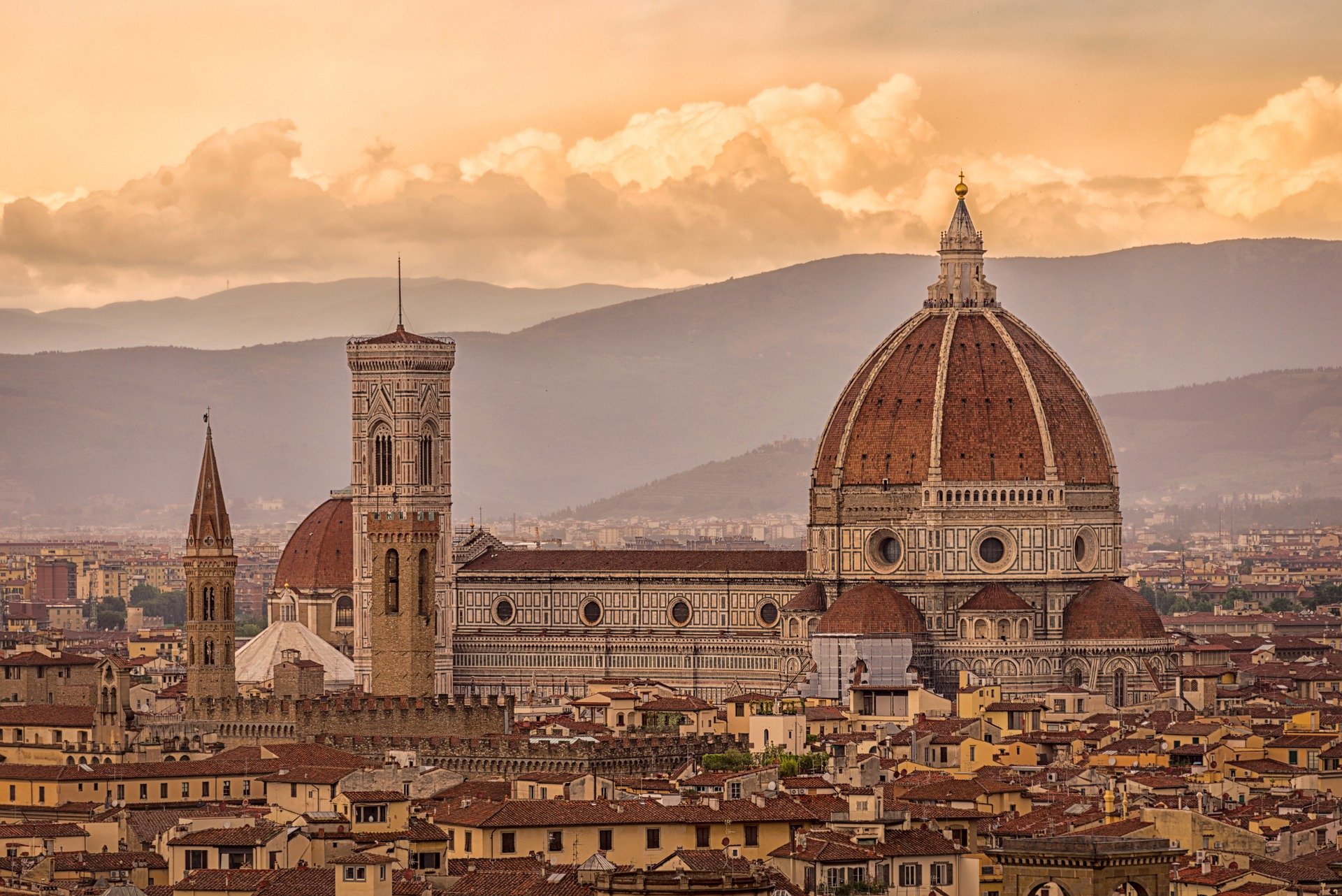
Short Answers Type Questions [3 Marks]
Ques 47. Explain any three beliefs of the conservatism that emerged after 1815.
Ans: Following were the beliefs of conservatism that emerged after 1815:
- The conservatives held the belief that established, traditional institutions of state and society like monarchy, church, social hierarchies, property and family must be protected and preserved.
- They never proposed a pre-revolutionary period to return to but they knew that as Napoleon had carried out changes, modernisation would in fact contribute to a strong monarchy. They believed that it would strengthen power of the state and make it much more effective.
- For them it was a firm belief that aristocratic monarchies of Europe would gain much from a modern army, an efficient bureaucracy, a dynamic economy, the abolition of feudalism and serfdom. ‘
Ques 48. Explain any four economic hardships that Europe faced in the 1830s.
Ans: Refer to Ans 10
Ques 49. Describe any three reforms introduced by Napoleon in the territories he conquered.
Ans: Refer to Ans 13
Ques 50. Explain the contribution of Otto von Bismarck in German unification.
Ans: Otto von Bismarck was the chief architect of German unification. He carried out the.process with the help of Prussian army and bureaucracy. He helped in infusing nationalism in the mind of the masses. Three wars for over seven years were fought to seek the German nation and defeat of Austria, Denmark and France. Bismarck initiated in proclaiming the new German nation under Kaiser William I of Prussia, thus completing the process of German unification.
Ques 51. Explain any three ways in which nationalists feelings were kept alive in Poland in the 18th and 19th century.
Ans: Polish people used their culture in a big way. They strived hard to keep their national identity. Nationalist feelings were kept alive in Poland in the following ways:
- They used music to keep their unity and identity. Karol Kurpinski raised the national struggle by staging his Polish operas and music.
- Traditional dance forms of Poland polonaise and mazurka became their national symbols.
- In the regions occupied by the Russia, Polish people used their language to develop nationalist feelings. It was used as a weapon of national resistance in Church gatherings and religious instructions.
Ques 52. Explain any three causes of conflict in the ‘Balkan area’ after 1871.
Ans: The Balkans comprised of modern-day Romania, Bulgaria, Albania, Greece, Macedonia, Croatia, Bosnia-Herzegovina, Slovenia, Serbia, and Montenegro. A large part of this region was under the control of the Ottoman Empire. This was a region of great geographical and ethnic variation and its inhabitants were known as Slavs. The following were the main causes of the. conflict in the Balkan area after 1871:
- The feelings of nationalism of these countries were in conflict with one another. They were fiercely jealous of each other and struggle to define their identity. They were extremely intolerant of one another.
- The disintegration of Ottoman Empire which had throughout the 19th centuries tried to strengthen itself through modernisation and reforms.
- The breaking away of each of these nationalist group one by one from control of the Ottoman Empire was the another cause of conflict. They declared themselves as independent with political rights on the basis of the history. They proved that once they had been independent but were subsequently subjugated by foreign powers.
- Each of these counties attempted to gain more territory at the expense of the others.
- The Balkans became a scene of big power of rivalry. Major European pofter— Russia, Germany-England—Austro-Hungary—manipulated nationalist aspirants to complete their own aims. There was a rivalry between the European powers over trade and colonies as well as naval and military superiority.
- There was a rivalry among the big powers to counter the hold of other powers over the Balkan region and extending their own control, {any three)
Ques 53. Explain the contribution of Giuseppe Mazzini in spreading revolutionary ideas in Europe.
Ans: Italian revolutionary Giuseppe Mazzini was born in Genoa in 1807. He became a member of the secret society of the Carbonari. At the age of 24, he was sent into exile in 1831 for attempting a revolution in Liguria. He founded two underground societies, first, Young Italy in. Marseilles and Young Europe in Berne. The members of the society were drawn from Poland, France, Italy and the German states. Mazzini strongly believed that God had intended nations to be the natural units of mankind. So Italy could not continue to be a patchwork of small states and kingdoms. It had to be forged into a single unified republic within a wider alliance of nations. This unification alone could be the basis of Italian liberty. Following his model, secret societies were set up in Germany, France, Switzerland, and Poland. Mazzini’s relentless opposition to monarchy and his vision of democratic republics frightened the conservatives. Metternich described him as ‘the most dangerous enemy of our social order’.
Ques 54. Explain in three points, how Ireland was incorporated into United Kingdom in 1801.
Ans: Ireland was incorporated into United Kingdom in 1801 in the following ways:
- Ireland was deeply divided between Catholics and Protestants. The English helped the Protestants to establish dominance over the largely Catholic country.
- Catholics revolted against this dominance but were suppressed. Wolfe Tone and his United Irishmen led a revolt but failed.
- As the English nation grew in power and influence, Ireland’s distinctive culture and language was suppressed. The new symbols like British flag, national anthem and English language was promoted.
Ques 55. Explain any three features of the ‘Nation State’ that emerged in Europe in the twentieth century.
Ans: The following were the features of the ‘Nation State’ that emerged in Europe in the twentieth century:
- This period witnessed intense rivalry and group were formed among nations over trade and colonies as well as naval and military might.
- Ottoman Empire had disintegrated and subject nationalities declared their independence.
- Colonies waged anti-colonial struggle which led to the independence of these nations.
Ques 56. Explain the process of unification of Germany.
Ans: Refer to Ans 21
Long Answer Type Questions [4\5 Marks]
Ques 57. Explain any four ideas of Liberal Nationalists in the economic
Ans: Liberal nationalists had the following ideas in the economic sphere:
- They wanted the freedom of markets and abolition of state-imposed restrictions on the movement of goods and capital.
- They argued for the creation of unified economic territory.
- Reduction of currency disparities and following of uniform weights and measures.
- Creation of infrastructure to stimulate mobility and harness economic interests to national
Ques 58. Explain any four changes brought about in Europe by the Treaty of Vienna(1815)
Ans: Napoleon was defeated in 1815 by collective European powers i.e. Britain, Russia, Prussia,and Austria. The representatives of European powers drew up the Treaty of Vienna at a congress hosted by Austrian Chancellor Duke Metternich with the objective of undoing the changes that had come about the Europe during the Napoleonic wars. Following changes were brought about in Europe by this treaty:
- The Bourbon dynasty that was destroyed during the French Revolution was restored.French lost the territories it has annexed under Napoleon.
- A series of states were set up on the boundaries of France to prevent French expansion in future.
- The Netherlands which included Belgium was set up in the north. Genoa was added to Piedmont in the south.
- prussia was given important new territories on its western frontiers. Austria was given control of northern Italy.
- The German confederation of 39 states set up by Napoleon was left untouched. Russia was given part of Poland and Prussia was given part of Saxony.
- Monarchy was restored and a new conservative order was created in Europe.
Important Questions of History Class 10 Chapter 1
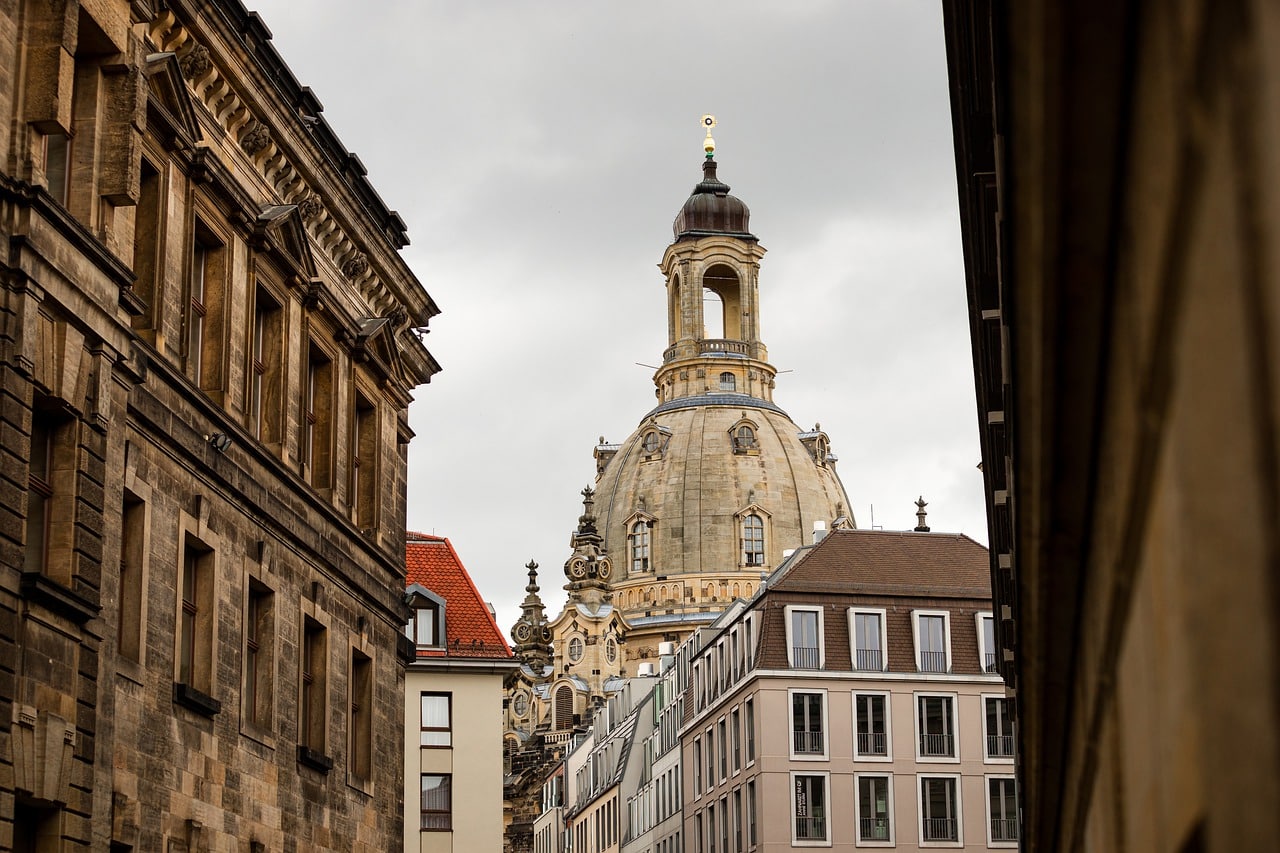
Very Short Answers Type Questions [1 Mark]
Ques 59. Mention the proclamation of the French Revolution.
Ans: The French Revolution proclaimed that it was the people who would constitute the nation and shape its destiny.
Ques 60. Who founded the secret society, ‘Young Italy’ during the 1830s?
Ans: Giuseppe Mazzini, an Italian revolutionary, founded secret society, ‘Young Italy’ during the 1830s.
Ques 61. Name the female allegory representing the Republic of France.
Ans: The female allegory representing the Republic of France is Marianne.
Ques 62. Name the female allegory of the German nation.
Ans: The female allegory of the German nation is Germania.
Ques 63. What was the result of the first upheaval that took place in France in July 1830?
Ans:The first upheaval that took place in France in July 1830 resulted in the overthrowing of the Bourbon kings and installation of a constitutional monarch with Louis Philippe as its head
Ques 64. Explain any three features of Napoleonic Code
Ans: The following were the features of the Napoleonic Code:
- Monarchy was restored after destroying democracy.
- The administrative system was made rational and efficient. Privileges based on birth were abolished and equality before the law was established.
Ques 65. Explain any three measures introduced by the French revolutionaries to create a sense of collective identity amongst the French people.
Ans: Refer to Ans 12
Ques 66. “Culture played an important role in creating the idea of the nation in Europe”. Support the statement with examples.
Ans: Refer to Ans 11
Ques 67. Describe in brief the great economic hardships during the 1830s in Europe.
Ans:Refer to Ans 10
Ques 68. Describe in brief the process by which the ‘British Nation’ came into existence.
Ans: Refer to Ans 24